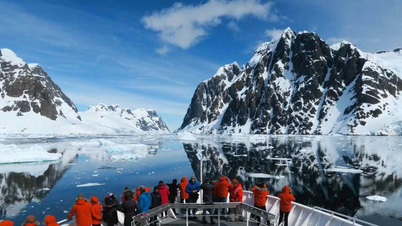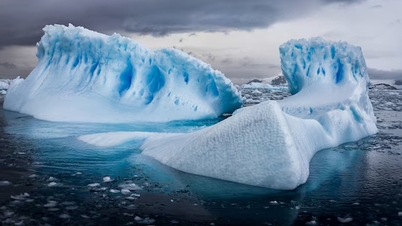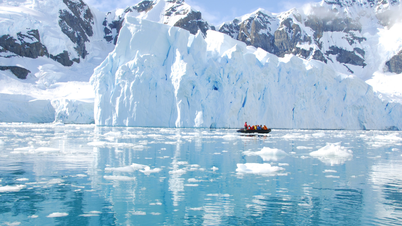Recent satellite images show the world's largest iceberg, A23a, weighing nearly one trillion tonnes, is currently drifting rapidly past the northern tip of the Antarctic Peninsula, driven by strong winds and currents.

Satellite image of the world's largest iceberg A23a seen in Antarctica. Photo: Reuters
Since breaking away from the Filchner-Ronne Ice Shelf in West Antarctica in 1986, the iceberg – which once housed a Soviet research station – has been stuck with its base stuck at the bottom of the Weddell Sea.
British Antarctic Survey glaciologist Oliver Marsh said it was rare to see an iceberg of this size moving, so scientists would be closely monitoring its trajectory.
If it continues to accelerate, the giant iceberg is likely to move into the Antarctic Circumpolar Current, which would carry it into the Southern Ocean on a path known as “iceberg alley,” where other icebergs are bobbing in the dark waters.
It is not yet clear what caused the iceberg to suddenly break away. “Over time, the iceberg may have thinned out a bit, allowing it to rise above the ocean floor and be carried by ocean currents,” said Marsh. A23a is also one of the world’s oldest icebergs.

A penguin stands on an iceberg. Photo: AP
It is likely that A23a will end up on South Georgia. This is the breeding and feeding ground of millions of seals, penguins and seabirds. If A23a collides with South Georgia, millions of these creatures will be prevented from breeding and feeding.
Earlier in 2020, another massive iceberg – A68 – raised fears that it would collide with South Georgia, crushing sea life and cutting off food sources. However, that disaster did not happen when A68 broke into many small pieces. The same fate could happen to A23a.
An iceberg this size is likely to remain in the south Atlantic for quite some time, although in much warmer weather it could move further north towards South Africa. “We don’t know yet how big an impact this will have,” Marsh said.
Hoai Phuong (according to SCMP, Reuters, CNN)
Source


































































































Comment (0)